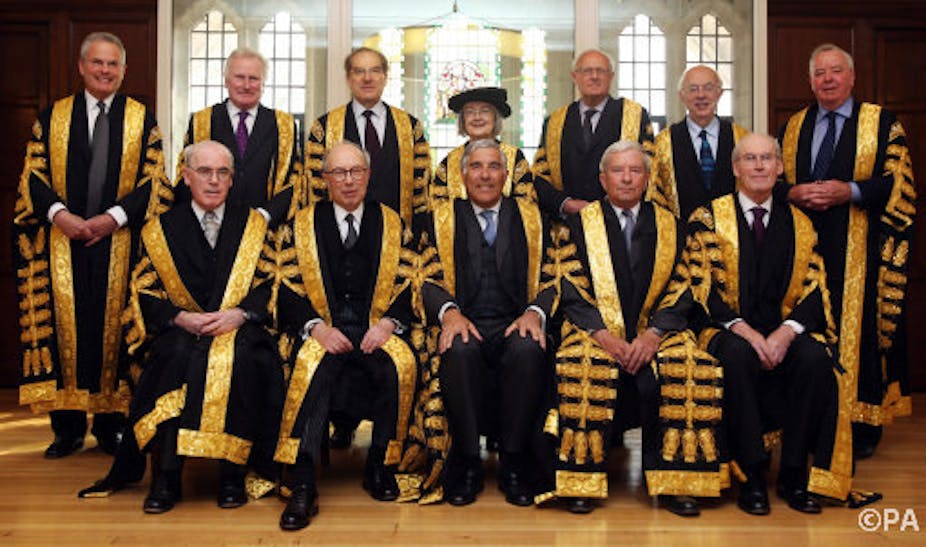While few would now argue against the importance of a diverse judiciary, do women judges, or judges from minority backgrounds, change the actual substance of judicial decision-making? In other words, do they decide differently from their white male colleagues?
It’s a controversial question - and a difficult one to verify, but BBC Radio 4’s Law in Action programme has attempted to do just that. The methodology came from an unimpeachable source: the top judge in Britain. It picks up the gauntlet laid down by Lord Neuberger, President of the Supreme Court, in an earlier programme to get lawyers in a room, present them with a number of judgments, and say: “Right, which were by men and which by women?” The experiment, or - as Lord Neuberger puts it - a “parlour game”, was conducted, with my assistance, using around 30 law undergraduates at Durham Law School.
Judgment call
My students were asked if they could tell whether a man or a woman had written the judgment in number of family, employment and criminal law cases decided by the Court of Appeal over the past year or so. The cases were anonymised and selected at random, subject to the need to ensure there were equal number of judgments written by women and men.
How did they do? The students were able to correctly identify the gender of the judge in just six of the 13 judgments – a success rate of 46% – not including the three judgments where there was a 50/50 split.
Overall, they were slightly better in the employment and family cases at spotting the gender of the judgment’s author than in criminal cases, where the success rate dropped to 33%. Of course, in a random selection of cases, strong gendered differences are unlikely to arise in every case. The students might be forgiven for failing to identify the gender of the judge in cases involving increases in sentences for robbery, or the reasonableness of a university’s adjustments in response to a student’s disability, where gender differences are less likely to arise.

The students typically tended to do better in cases where the facts invited a more strongly gendered response, for example in relation to a criminal law case involving an unsuccessful appeal against a conviction for perverting the course of justice involving a woman who was in an abusive relationship withdrawing a true allegation of rape against her husband, where 59% correctly identified the male judge.
While the experiment told us something, it did not answer the question Lord Neuberger asked. Perhaps it never could. Of course, it was limited by the size and scope of its sample of cases and expert readers as well as the number of women sitting in the Court of Appeal. But that aside, what other surveys of this type have shown is that even given unlimited time and resources, the methodology is flawed. It is simply impossible to isolate the potential impact of gender, as distinct from any other identity characteristic, in any given judgment – let alone across the board.
Insofar as gender does affect judicial decision-making, and it seems implausible to think that it does not, at least on occasions, make a difference to how judges judge - there is no reason for thinking that it does so in a particular and identifiable way.
Gender-based assumptions
That said, while the experiment tells us relatively little about the differences between men and women judges, it tells us much more about the students’ assumptions as to what these differences might be. From listening to the students, and reading their comments on the cases, it was clear that they started with a list of gendered traits and characteristics which they refined as the experiment progressed.
So while they expected the judgments of women judges to be “emotional”, “empathetic”, “involved” and to focus on the wider social context, the men’s, they assumed, were likely to embody the characteristics of “decisiveness”, “confidence”, “brevity” and “neutrality”.
Of course, what the results of the Law in Action experiment reveal is that neither of these sets of assumptions are accurate. In fact, the experiment perhaps reveals more about the students’ general (problematic) assumptions about gender and characteristics that might apply to women and men across a variety of contexts, such as business and politics, than to judging specifically.
Lord Neuberger’s experiment – or parlour game – does not prove the impact of gender on a judge’s decision-making. But nor, as Lord Neuberger acknowledged, does it prove that gender does not at least on occasion inform judgment.
The case for diversity
The fact that we have no reliable method for identifying where and how women judge differently does not mean that such differences do not exist. One might go so far as to say that the burden of proof is on those who would deny that gender has any impact on judging.
Few would now deny that there are times when judges – especially those at the highest levels – are called on to make decisions where the existing legal rules provide no clear answer. In such cases the judge must turn to their own sense of justice, of what is right and wrong, which is in turn shaped and informed by the insights and perspectives their backgrounds offer.
Since one’s gender provides the inescapable backdrop to all one’s experiences and takes centre stage in many, there is reason to think that it will inevitably make some contribution to one’s outlook and ideals, even if that contribution can never be isolated and will differ from person to person. If the differences in experience – and so in outlook – women judges might bring with them to the bench are differences which would enrich judicial decision-making and enrich the law, then we have a strong foundation for an argument for why a diverse judiciary really would be a better judiciary.

